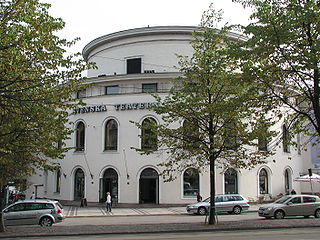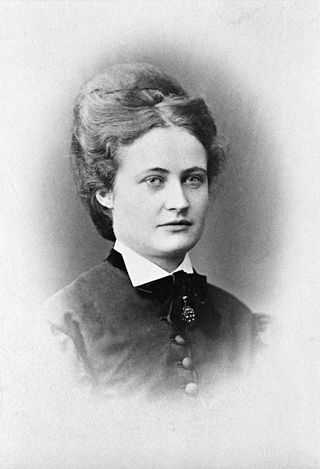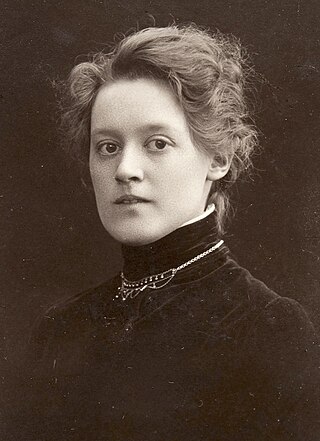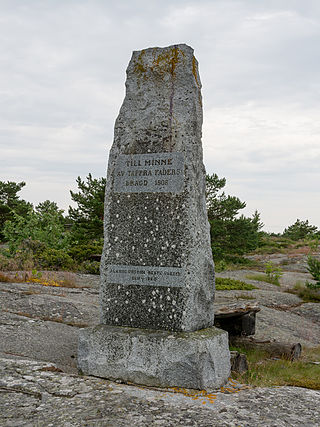Related Research Articles

The Sublime Porte, also known as the Ottoman Porte or High Porte, was a synecdoche or metaphor used to refer collectively to the central government of the Ottoman Empire in Istanbul.

Education in Sweden is mandatory for children between ages 5/6 and 15/16 depending on when in the year they were born. The school year in Sweden runs from mid–late August to early/mid–June. The Christmas holiday from mid–December to early January divides the Swedish school year into two terms.

Olof Persson, sometimes Petersson, better known under the Latin form of his name, Olaus Petri, was a clergyman, writer, judge, and major contributor to the Protestant Reformation in Sweden. His brother, Laurentius Petri, became the first Evangelical Lutheran Archbishop of Sweden.

Studentexamen, earlier also mogenhetsexamen was the name of the university entrance examination in Sweden from the 17th century to 1968. From 1862 to 1968, it was taken as a final written and oral exam on graduation from gymnasium. In Finland the examination still exists. The exam traces its origin to the academic statutes from 1655 requiring the dean to examine students arriving at university before allowing matriculation. According to the school reglement of 1693, a prospective student was to have gone through both a final examination at school and an entrance examination at university. The school reglement of 1724 allowed students without a final examination from school to enroll at university, provided a person known at the university would guarantee their behaviour, which led to it becoming common for students from wealthy families to be matriculated at a very young age, accompanied by a private tutor. Although these were not actually supposed to be allowed to graduate, this rule was not always strictly upheld.
Viktor Rydberg Gymnasium (VRG) is a group of four gymnasium in Stockholm, Sweden named after the famous Swedish author Viktor Rydberg. The four upper secondary schools are VRG Djursholm, VRG Odenplan, VRG Jarlaplan and VRG Sundbyberg, run by the Viktor Rydberg Schools Foundation. The foundation also runs three secondary schools, Viktor Rydbergs samskola Djursholm, Viktor Rydbergs skola Vasastan, and Viktor Rydbergs skola Sundbyberg. Members of its board of directors are currently Louise Ankarcrona, Louise Westerberg, Fredrik Palmstierna, Stefan Persson, Fanny Falkenberg, Nils Andersson, Thomas Hvid and Sofia Bendz.

The Swedish Theatre is a Swedish-language theatre in Helsinki, Finland, and is located at the Erottaja square, at the end of Esplanadi. It was the first national stage of Finland.

Åbo Svenska Teater is a Finland-Swedish theatre in the city of Turku in Finland and the oldest theatre in the country, founded in 1839. The building itself is also the oldest still functioning theatre house in Finland. The name means "The Swedish theatre of Åbo"; Åbo is the Swedish name of the city of Turku.
Ottilia Sofia Littmarck was a Swedish actress and theatre director. She was a noted actress in Sweden in the late 19th century.
Magnus Stiernstråle was a Swedish military colonel, and was most likely from Livonia.

Nils Svantesson Sture was a Swedish diplomat and soldier during the reign of Erik XIV of Sweden. He was the son of Svante Stensson Sture and Märta Erikdotter Leijonhufvud.

Anna Maria Carolina Sandström was a Swedish feminist, reform pedagogue and a pioneer within the educational system of her country. She is referred to as the leading reform pedagogue within female education in Sweden in the late 19th century.

Events from the year 1909 in Sweden

Norrtulls sjukhus in Vasastan, Stockholm, Sweden was erected 1883–85 as a model orphanage, converted in the 1920s to a children's hospital that in 1951 was relocated to the Caroline Institute and later renamed to Astrid Lindgren Children’s Hospital. Norrtulls sjukhus was then converted into a geriatric hospital, and in the 1990s to a psychiatric clinic. As the buildings in 2004 were deemed inappropriate, they have been sold on the open market.

Margarita Maria “Maggie” Gripenberg was a pioneer of modern dance in Finland. She was the first to introduce Dalcroze Eurhythmics to Finland and modeled her early works on the improvisational style of Isadora Duncan. As a dancer, choreographer and teacher, she laid the educational foundations for the study of movement and dance. She was recognized by numerous awards for her choreographic work as well as being honored with the Pro Finlandia Medal and as a knight of the Order of the White Rose of Finland.
Carl Oscar (Oskar) Boije af Gennäs, was a Swedish collector of guitar sheet music.

Tapetskolan vid Karlberg or Tapetväfveriet vid Karlbergs slott, also called Karlbergsfabriken, was a Swedish orphanage and a school for girls. It was founded by Ulrika Eleonora of Denmark, Queen Consort of King Charles XI of Sweden. She founded a large number of charitable institutions which were paid by her personally. The handicrafts school was situated at the royal summer residence Karlberg Palace which King Charles XI had purchased in 1688.

Ellen Beata Elisabeth Sandelin was a Swedish physician who practiced in Stockholm, and was also a teacher in physiology and health education. She received her medical license in 1897.

The Battle of Kulminge was the culmination of the Åland riots during the Finnish War, fought between Sweden and Russia. The riot started in the Sockenstuga at 19 March 1808 and spread all over Åland, to finally culminate at Kumlinge at 9 or 10 May. 450 armed peasants, led by Henrik Gummerus, defeated and captured the equally strong Russian force under Colonel Vuitsch at their headquarters, just outside the Kulminge rectory. The peasants sustained three killed and three captured, while the Russians had one killed and eight wounded. After Vuitsch's capitulation, only about 50 Russian soldiers remained on Brändö who likewise, after a brief engagement, were made prisoners; all of Åland had thus been saved from Russian occupation.

Lilly Walleni is the stage name of Sanna Klara Vallentin (1875–1920), a Swedish mezzo-soprano. Thanks to her powerful voice and her dramatic temperament, she is remembered in particular for the Wagner roles she performed in Germany's principal opera houses as well as in Stockholm. From 1911 to 1916, she was engaged by the Court Opera in Hannover where she was honoured with two Lippe awards.
References
- ↑ Nordisk Familiebok / Uggleupplagan. 29. (in Swedish). Retrieved November 16, 2013.
- ↑ Opillinen koulutus Ruotsin suurvaltakaudella (in Finnish). Retrieved November 16, 2013.
- ↑ Nordisk Familiebok / Uggleupplagan. 17. (in Swedish). Retrieved November 16, 2013.